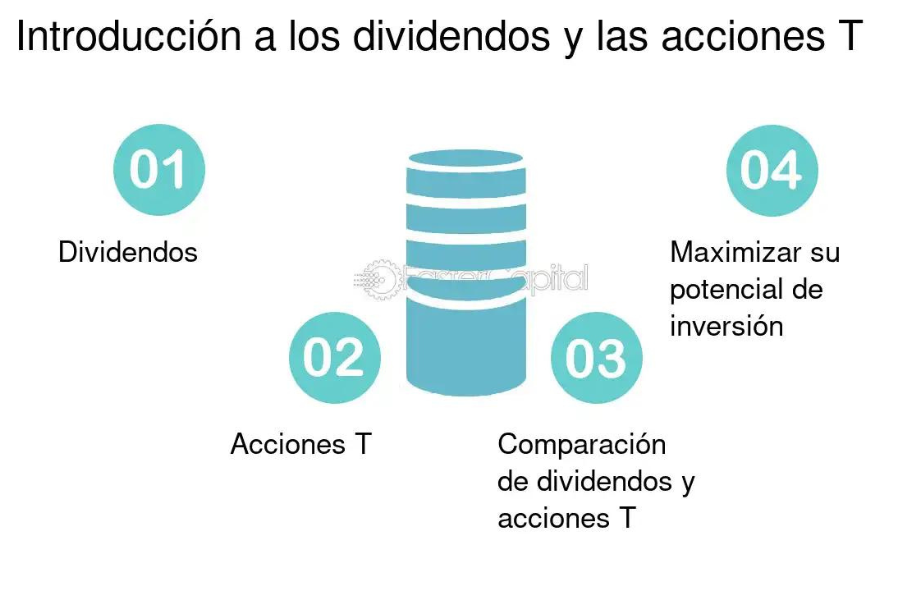Https://onlypc.net/que-son-los-dividendos-de-acciones: A Comprehensive Guide to Maximizing Your Investment Returns
Investing in the stock market is often compared to an adventure, full of ups and downs, risks, and rewards. One of the most consistent and reliable ways to earn a return on your investment is through dividends. For both novice and professional investors, understanding the concept, types, workings, and global implications of stock dividends is crucial. This comprehensive guide will explore these aspects in detail, arming you with the knowledge necessary to make informed decisions that align with your financial goals.
Understanding Stock Dividends
A stock dividend https://onlypc.net/que-son-los-dividendos-de-acciones is a payment made by a corporation to its shareholders, typically in the form of additional shares rather than cash. Unlike cash dividends, which distribute a portion of a company’s profits directly to shareholders, stock dividends allow investors to increase their holdings without reinvesting manually. This method of profit-sharing is an effective way for companies to reward their investors, especially those who are looking to grow their investment portfolios over time.
In the world of finance, stock dividends play a significant role in enhancing the value of your investments. They represent a portion of the company’s retained earnings that are redistributed among shareholders in the form of new shares. This reinvestment not only boosts the shareholder’s ownership but also defers the tax liability until the shares are sold, making it a more tax-efficient option compared to cash dividends.
Why Dividends Matter for Long-Term Investors
Dividends are more than just a source of passive income; they are a crucial element in long-term investment strategies. During periods of market volatility or when capital appreciation is low, dividends provide a steady income stream that can help maintain the stability of your portfolio. For many investors, especially those focused on long-term wealth creation, reinvesting dividends can lead to compounding returns, significantly amplifying the growth of their investments over time.
One of the key benefits of dividends is their ability to provide income during bear markets. When stock prices are falling, dividends offer a reliable source of cash flow that can help offset losses in capital value. Moreover, dividends are often seen as a sign of a company’s financial health and stability. Companies that consistently pay dividends are generally viewed as more reliable and less risky, making their stocks more attractive to conservative investors.
Types of Stock Dividends
Understanding the different types of dividends is essential for investors who want to optimize their portfolios. The three main types of dividends are cash dividends, stock dividends, and special dividends.
Cash Dividends: Cash dividends https://onlypc.net/que-son-los-dividendos-de-acciones are the most straightforward type of dividend, where companies distribute profits directly to shareholders in the form of cash. These payments are typically made on a quarterly basis, though some companies may opt for annual or semi-annual distributions. While cash dividends provide immediate income, they are also subject to taxation, making them less tax-efficient than other forms of investment income.
Stock Dividends: In contrast to cash dividends , stock dividends involve the distribution of additional shares to shareholders. This method allows investors to increase their holdings without having to reinvest their earnings manually. Since taxes on stock dividends are deferred until the shares are sold, they offer a more tax-efficient alternative to cash dividends. This approach is particularly beneficial for long-term investors who are focused on growing their portfolios over time.
Special Dividends: Special dividends https://onlypc.net/que-son-los-dividendos-de-acciones are one-time payments made by a company, usually after an exceptionally profitable period. These dividends are typically larger than regular dividends and are not expected to recur. Special dividends are often used as a way to reward shareholders when a company has excess cash that it does not need for immediate reinvestment or other purposes.
How Stock Dividends Work
The process of dividend distribution is relatively straightforward but varies depending on the company’s policies and financial health. Dividends are usually paid out of a company’s profits after taxes have been deducted. However, not all companies choose to pay dividends. Companies in the growth stage of their life cycle often prefer to reinvest profits into the business to fuel expansion rather than distribute them as dividends. On the other hand, well-established companies with stable incomes are more likely to pay regular dividends.
To be eligible for a dividend, investors must own the stock before the ex-dividend date. The ex-dividend date is a critical point in time because it determines who is entitled to receive the dividend. If an investor purchases a stock after the ex-dividend date, they will not receive the next dividend payment. The record date, which typically follows the ex-dividend date, is when the company reviews its records to confirm which shareholders are eligible for the dividend.
The Global Perspective on Dividends
Dividends are a common feature in stock markets around the world, but their importance and tax implications vary significantly from one country to another. Let’s explore how dividends are treated in different markets:
United States: The U.S. has a strong culture of dividend payments, particularly among large, established companies known as blue-chip firms. In the U.S., dividends are taxed at a lower rate than ordinary income, making them an attractive option for income-focused investors. The country’s favorable tax treatment of dividends encourages investors to include dividend-paying stocks in their portfolios as a way to generate steady income.
United Kingdom: In the U.K., dividends are taxed based on the investor’s income tax rate. However, the government provides a dividend allowance, allowing investors to receive a certain amount of dividend income each year without paying taxes on it. This tax advantage makes dividend-paying stocks appealing to U.K. investors who want to supplement their income without incurring a significant tax burden.
Japan: Traditionally, Japanese companies have paid lower dividends compared to their Western counterparts. However, this trend has started to change as Japanese firms adjust their dividend policies to meet the expectations of foreign investors. As a result, dividend-paying stocks in Japan are becoming more attractive to global investors seeking income and diversification.
Emerging Markets: In many emerging markets, such as Brazil and India, companies tend to reinvest profits for growth rather than pay dividends. However, certain sectors, like utilities and telecommunications, offer high-dividend yields. Investors looking for income opportunities in emerging markets may find attractive dividend-paying stocks in these sectors, even though the overall dividend culture in these regions is less developed.
Reinvestment of Dividends: The Power of Compounding
Reinvesting dividends is one of the most powerful strategies for building wealth over time. This process, known as a Dividend Reinvestment Plan (DRIP), allows investors to automatically reinvest their cash dividends into additional shares of the company’s stock. By reinvesting dividends, investors can take advantage of the compounding effect, where dividends generate additional dividends, leading to exponential growth in the value of their investments.
DRIPs are particularly beneficial for long-term investors who are focused on growing their portfolios. By continuously reinvesting dividends, investors can accumulate more shares, which in turn generate more dividends. Over time, this compounding effect can significantly increase the overall return on investment, making DRIPs a powerful tool for wealth creation.
Dividend Yield: A Key Metric for Investors
One of the most important metrics for analyzing dividend-paying stocks is the dividend yield. The dividend yield is calculated by dividing the annual dividend per share by the current stock price. This metric provides investors with an indication of how much income they can expect to receive relative to the price they paid for the stock.
A high dividend yield may indicate that a stock is undervalued or that it offers a significant return on investment. However, investors should exercise caution when evaluating stocks with very high yields, as this may also be a sign of financial distress or an impending dividend cut. On the other hand, a low dividend yield may suggest that a stock is overvalued or that the company is reinvesting most of its profits for growth rather than paying dividends.
Conclusion
In the world of investing, dividends represent a powerful tool for generating income and building wealth over the long term. By understanding the different types of dividends, how they work, and their global implications, investors can make informed decisions that align with their financial goals. Whether you are a novice investor looking to grow your portfolio or a seasoned professional seeking to enhance your income, dividends offer a reliable and effective way to achieve your objectives.
The key to harnessing the full potential of dividends lies in adopting a strategic approach. This includes selecting dividend-paying stocks that align with your investment goals, reinvesting dividends to take advantage of the compounding effect, and staying informed about global dividend trends and tax implications. With the right strategy in place, you can leverage the power of dividends to supercharge your investment portfolio and secure your financial future.
By visiting https://onlypc.net/que-son-los-dividendos-de-acciones, you can deepen your understanding of stock dividends and explore how they can play a crucial role in your investment journey. Whether you’re interested in learning more about cash dividends, stock dividends, or special dividends, this resource offers valuable insights that can help you make informed decisions and achieve your financial goals.
Stay in the know with the latest news and updates on Cnbcblog.com




